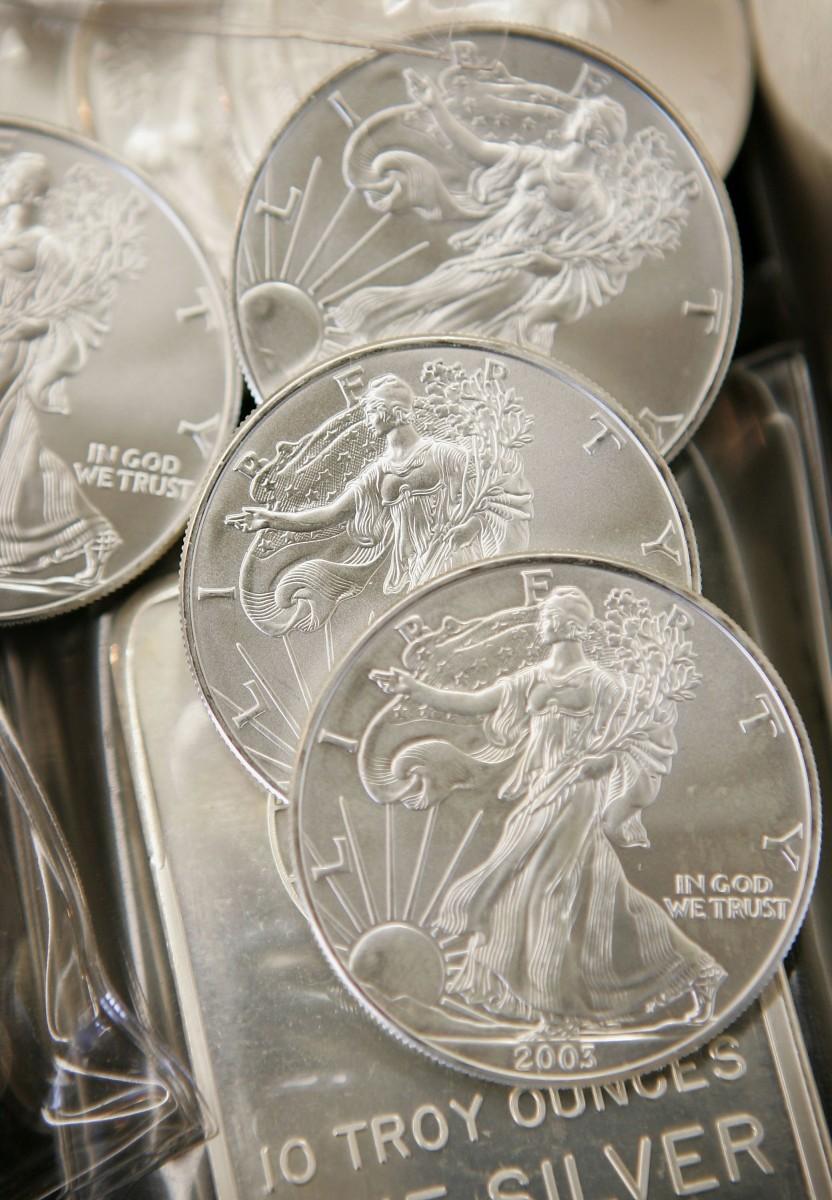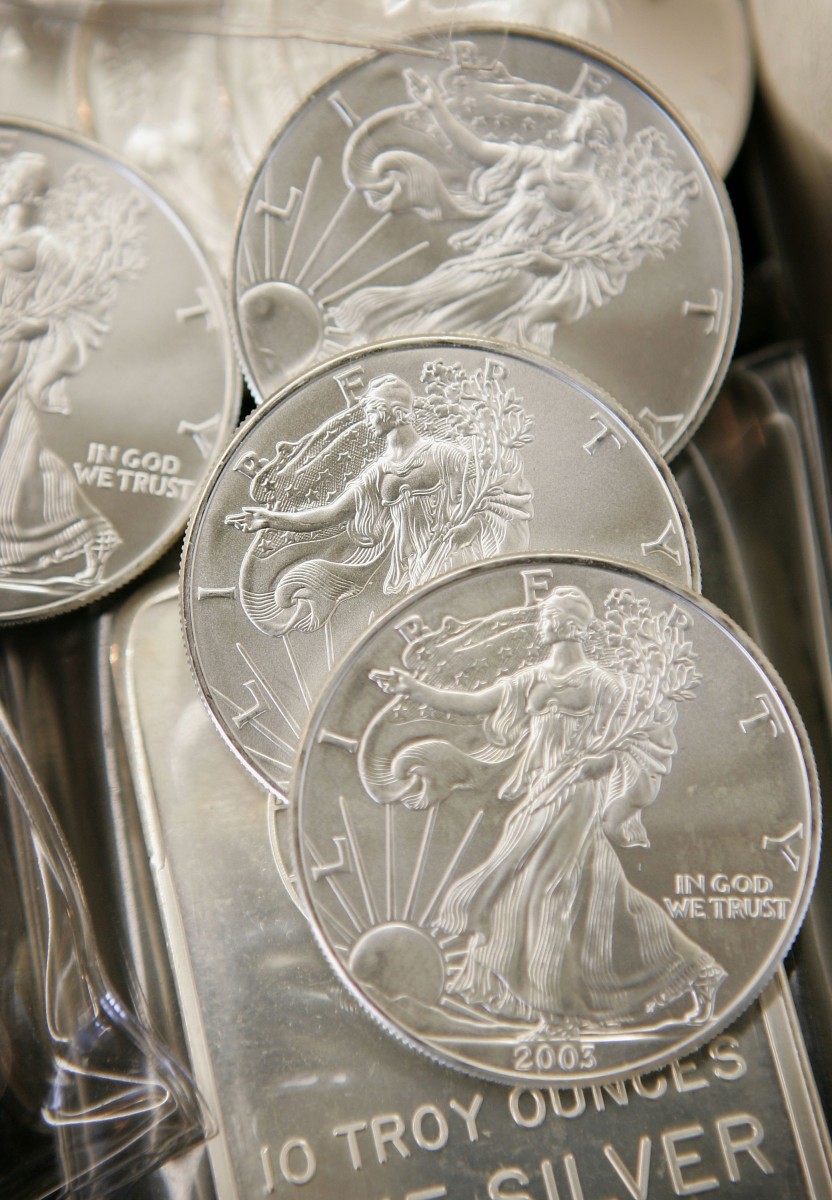The London Fix Silver prices have been on a roller coaster ride over the past few years, ebbing and flowing up and down, rising from an annual cumulative average of $14.6733 per ounce in 2009 to an annual cumulative average of $20.1928 in 2010. It rose to $35.1192 in 2011, and from Jan. 1 to Feb. 15, the annual cumulative average fell to $31.7844, according to historical data on the Kitco Metals Inc. website.
In 2009, the highest daily London Fix price was $17.9900 on Oct. 13 and the lowest $10.5100 on Jan. 15. In 2010, the highest daily London Fix price was $30.7000 on Dec. 30 with the lowest at $15.1400 on Feb. 8. In 2011, the highest daily London Fix price was $48.7000 on Apr. 28, and the lowest was $27.1000 on Jan. 26, moving up and down throughout the year.
Between Jan. 1 and Feb. 15 this year, the highest London Fix price was $33.8400 on Feb. 13, and the lowest was $28.7800 on Jan. 3.
The London Spot Fix is the price per ounce fixed daily at 10:30 a.m. and 3 p.m. during a conference call in London by the five members of the London Gold Pool: ScotiaMocatta, Barclays Capital (a division of Barclays Bank PLC), Deutsche Bank AG, HSBC Holdings PLC, and Société Générale S.A.
“There are two times in the day when we know for sure that the gold price [and other precious metals, including silver, platinum, and palladium] is being set in a clandestine procedure that is controlled by just five bullion banks,” states an article on the Market Force Analysis website, suggesting that the precious metal “market is not ‘fixed,’ it’s rigged.”
Silver Price Predictions
“For silver, BNP Paribas [based in France] increased its 2012 estimate to $37.50 from $36.75, and in 2013 to $52.00 from $49.75 per ounce. Over the four quarters of 2012, the firm predicted silver will average $31.90, $34.95, $39.30, and $43.80, respectively,” according to a Feb. 15 article on the GoldAlert website.
BNP Paribas’s Anne-Laure Tremblay, analyst at Paribas, was quoted to have said that the price of silver is determined by a given price for gold, as well as how much risk an investor is willing to take. During upward movement of both gold and silver prices, silver is a preferred investment, according to Tremblay.
“Gold and silver forecasters are probably too cautious about the outlook for 2012. This is not surprising after the volatility of 2011 which saw record highs for both metals but a collapse later in the year that left gold up 10 per cent and silver down around the same amount for the year,” suggests an article on the GoldSeek website.
HSBC doesn’t agree with BNP Paribas and believes that silver prices will remain at the status quo, according to an article on the Gold Price website. It predicted that silver prices would hover around $34 per ounce in 2012 and at $32 per ounce in 2013.
“We are bullish on silver, based on solid retail investment demand for coins and small bars. We expect silver ETF demand to recover this year, and based on HSBC Economics’ forecasts of industrial production, demand for silver from manufacturing should grow moderately,” said James Steel, precious metal analyst, as quoted on the MarketWatch website.
Continued on next page ... Quantifying Above Ground Silver
Quantifying Above Ground Silver
Regarding how much above ground silver is available, “the big problem is that nobody knows for sure,” according to a forum discussion on the Kitco website.
The Kitco forum member added, “What we do know is that somewhere around 500Moz [million ounces] to 1Boz [billion ounces] exists in known locations (for example, COMEX warehouses have 100Moz , the SLV ETF has 350Moz, etc.).”
According to historical records, about 60 billion ounces of silver has been mined since such records existed. The silver was used during ancient times for coins, made into silver bars, formed into sculptures, jewelry, and much more. In more modern times, silver is being used for photographic purposes, in electronic equipment, and for antibacterial purposes in medicines, food, and drinking water.
“We do not know how much of that 60Boz has been saved, how much is currently in products, and how much is sitting in landfills,” the Kitco forum member said.
Since about the 1950s, the United States has stockpiled about 3 billion ounces of silver in a vault in New York. However, any silver used by the U.S. mint is bought in the market.
“Since 1950, we have witnessed a collapse of 93% in global silver inventories yet, demand hasn’t stopped. The last time above ground silver inventory was this low was in 1380, and the usage for silver has accelerated,” according to statistics on the GoldSilver website.
Between 1950 and 2010, the silver bullion global supply decreased from 40 billion ounces, which was considered a 140-month supply, to 700 million ounces, considered to be an 11-month supply.
The electronics industry used 100 million ounces in 1999 and an estimated 250 million ounces in 2011. Researchers say that the available silver supply, both in the earth and already recovered, is limited, and there will be no in-ground silver available in about 25 to 30 years.
There are very few newly discovered silver deposits, as most silver is mined from greatly depleted existing mines. Also, the silver used by the electronics, health, and other industries isn’t recoverable once used, which means that it is lost forever.
“In all cases, unlike gold, silver is used and consumed and then not recoverable. The demand side of silver is very significant. There are some statistics from the U.S. geological studies indicating that just with the current demand for silver, all known mineable silver will be exhausted in just 29 years. This is very bullish for silver in the long term,” according to a February 2011 article on the submityourarticle website.
Reviewing Silver Mining Companies
“I was falling for dazzling investment propositions…each one with attributes that dreams are made of: bonanza discoveries of thick veins of ore. ...When it came decision time, I reverted to what I know: earnings growth and fundamental value,” said Stanley Barton, investment analyst, in a recent article on the Seeking Alpha website.
The first silver mine stock Barton bought was Revett Minerals Inc. Revett is owner of the Troy Mine, located in Montana, which mined 1.3 million ounces of silver in 2011 at a cost of $2.22 per ounce. Besides the Troy Mine, Revett is the owner of the Rock Creek mine in Montana, which is said to hold the largest silver deposit in the United States with 300 million ounces.
Before buying stock in a mining company, one needs to evaluate the silver deposits available for mining, and determine if the mine is in a development stage or production cycle. For example, a development stage mining company will have to pump $100 million into the operation over a period of three years before taking out the first ounce of silver, according to Barton.
“Precious metal miners are not always evaluated according to traditional methods. Undervalued land makes book value deceptively low, and accounting to amortize mine life reduces profit numbers. ... Bright earnings reports may blind one to the realities of a voluptuous vein flaming out,” Barton said.






